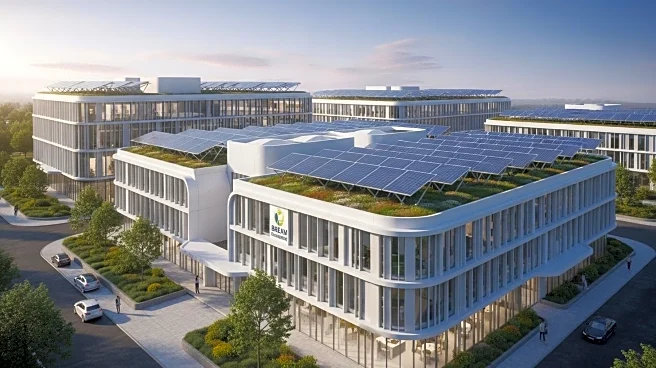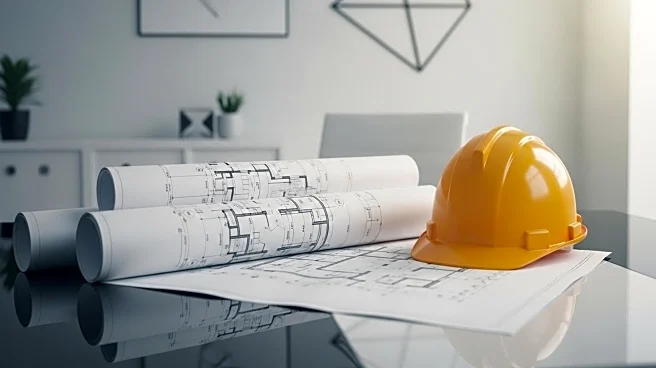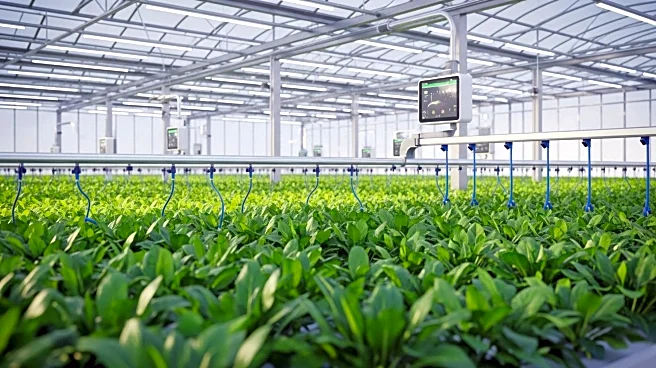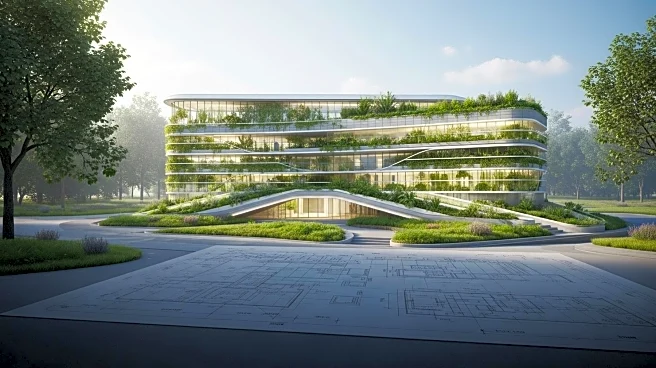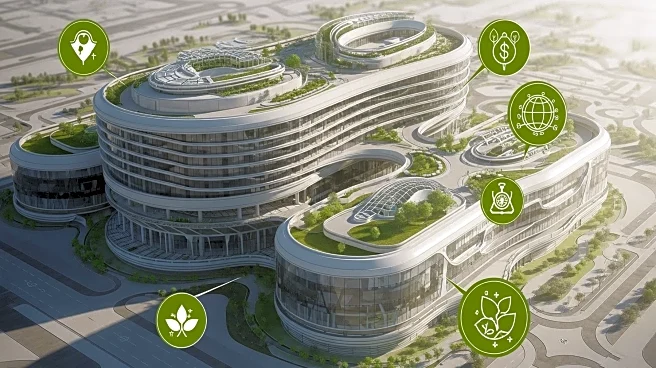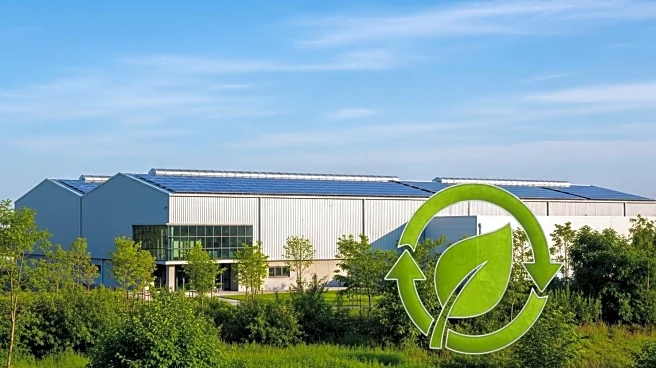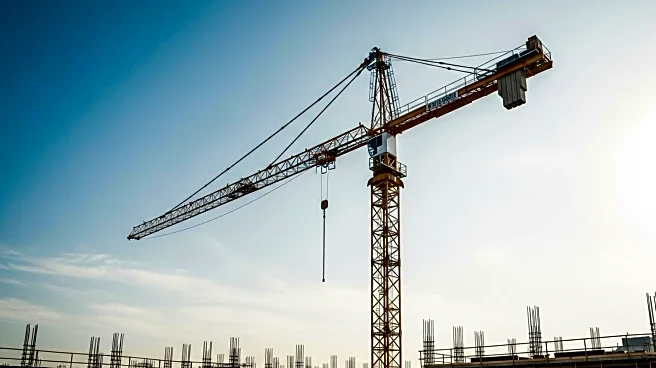What is the story about?
What's Happening?
The Building Research Establishment (BRE) has introduced BREEAM New Construction Version 7 (NC V7), a new sustainability standard for buildings. This version includes predictive operational carbon metrics, whole-life carbon assessments, and science-driven resilience measures. It aims to help developers optimize for net-zero goals by tracking embodied and operational carbon in detail. The standard emphasizes material selection and resource efficiency, providing a comprehensive understanding of an asset's lifecycle impact. NC V7 also includes rigorous climate risk assessments, focusing on extreme weather preparedness and durability. It guides design towards biodiversity net gain and resource efficiency, enhancing ecosystems and protecting natural capital. The standard applies to all asset types, including mixed-use projects, and aims to exceed regulatory requirements while meeting investor expectations.
Why It's Important?
The launch of BREEAM NC V7 is significant for the construction industry as it sets a higher benchmark for sustainability in building design. By focusing on net-zero goals and detailed carbon tracking, the standard encourages developers to go beyond mere regulatory compliance. This can lead to more sustainable building practices, reducing environmental impact and promoting biodiversity. The emphasis on resource efficiency and climate resilience is crucial in the face of increasing climate change challenges. Developers, investors, and property managers stand to benefit from a clearer understanding of an asset's environmental impact, potentially leading to more informed investment decisions and improved asset value.
What's Next?
BREEAM Refurbishment and Fit Out V7 is scheduled for launch in early 2026, followed by BREEAM In-Use V7 later in the year. These upcoming versions will continue to expand the scope of sustainability standards, potentially influencing more sectors within the construction industry. Stakeholders may need to adapt to these evolving standards, which could involve revising current practices and investing in new technologies to meet the enhanced requirements. The ongoing development of BREEAM standards suggests a continued push towards more sustainable and resilient building practices.
Beyond the Headlines
The introduction of BREEAM NC V7 may have broader implications for the construction industry, including potential shifts in regulatory landscapes as governments and agencies adopt similar standards. The focus on biodiversity and resource efficiency could lead to increased collaboration between environmental groups and developers, fostering innovative solutions for sustainable building. Additionally, the emphasis on climate resilience may drive advancements in building materials and technologies designed to withstand extreme weather conditions, contributing to long-term sustainability in urban planning.
AI Generated Content
Do you find this article useful?
